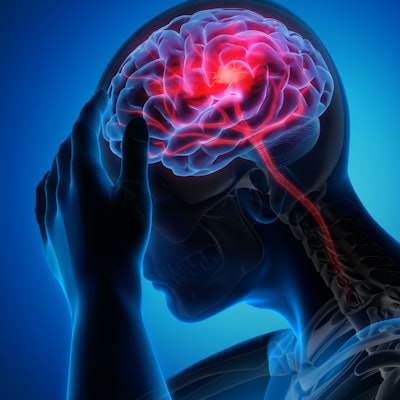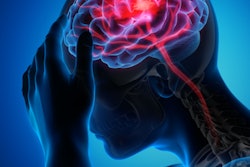
The use of both head CT angiography (CTA) and CT perfusion (CTP) studies increased dramatically between 2010 and 2018, according to research presented on April 22 at the virtual American Roentgen Ray Society (ARRS) meeting.
But the increase appears to be for the right reasons: It is associated with clinical data that show the two techniques to be beneficial for helping clinicians determine how to manage treatment for ischemic stroke patients, noted a team led by Dr. Jeffrey Elsner of Johns Hopkins Hospital. The group's analysis of more than 36 million Medicare beneficiaries reveals that use of both head CTA and CTP studies increased severalfold from 2010 to 2018.
"In an encouraging trend, the majority of these increases occurred in the immediate wake of prominent randomized trials that utilized CTA and CTP in selecting ischemic stroke patients likely to benefit from endovascular thrombectomy," the group noted.
The researchers conducted a number of randomized controlled trials in the 2010s that investigated the efficacy of endovascular thrombectomy versus standard management in patients with ischemic stroke (with standard management being intravenous injection of recombinant tissue plasminogen activator). The studies showed that patients who underwent thrombectomy had better functional outcomes, and included the following:
- Multicenter Randomized Clinical Trial of Endovascular Treatment for Acute Ischemic Stroke in the Netherlands (MR CLEAN), 2015
- Endovascular Treatment for Small Core and Proximal Occlusion Ischemic Stroke (ESCAPE), 2015
- Extending the Time for Thrombolysis in Emergency Neurological Deficits -- Intra-Arterial (EXTEND-IA), 2015
- DWI or CTP Assessment With Clinical Mismatch in the Triage of Wake Up and Late Presenting Strokes Undergoing Neurointervention With Trevo (DAWN), 2018
- Endovascular Therapy Following Imaging Evaluation for Ischemic Stroke (DEFUSE 3), 2018
Because CT angiography and CT perfusion were used to identify patients for these trials, Elsner's team sought to determine whether the trials resulted in increased use of these CT techniques, especially between 2016 and 2018, when the trial data were published.
"The development of CT perfusion started changing the game for diagnosing strokes quickly and getting people to thrombectomy," study presenter Dr. Andrew Kolarich said.
The researchers used data from the Physician/Supplier Procedure Summary Master Files, which are published by the U.S. Centers for Medicare and Medicaid Services (CMS). They identified CT angiography and CT perfusion exams via Common Procedural Terminology (CPT) codes (70496 and 0042T, respectively).
| Change in CTA, CTP use for stroke management | |||
| Measure | 2010 | 2018 | Percent change |
| Total No. of Medicare fee-for-service beneficiaries | 36 million | 38.7 million | 7.5% |
| Total No. of CTA studies | 138,189 | 474,393 | 243% |
| Total No. of CTP studies | 10,096 | 41,620 | 312% |
| CTA use per 100,000 persons per year | 384 | 1,227 | 220% |
| CTP use per 100,000 persons per year | 28 | 108 | 286% |
It's of particular interest that two year-over-year increases -- 2015 to 2016 and 2017 and 2018 -- made up most of the overall increase in CT angiography use (67% of gains) and CT perfusion use (87% of gains) and corresponded to the publication of the trial data, Elsner and colleagues noted.
In fact, growth in CT use for stroke assessment increased despite the fact that perfusion was bundled with CTA, Kolarich said.
The growth "is interesting from the perspective of reimbursement," he said. "After 2013 and to the current day, CT perfusion is not charged under a separate code but bundled with CTA, so most facilities are taking a loss on the perfusion part of the exam. Despite that, CT perfusion use increased dramatically over that time, which may be due to algorithms that have made it easier to interpret, not just for radiologists by for neurologists."





















